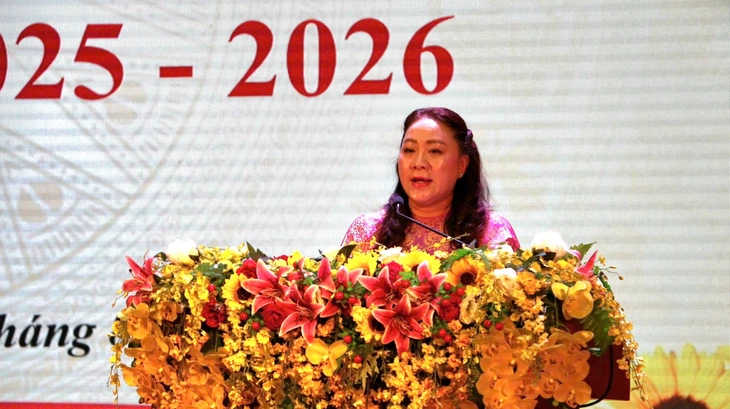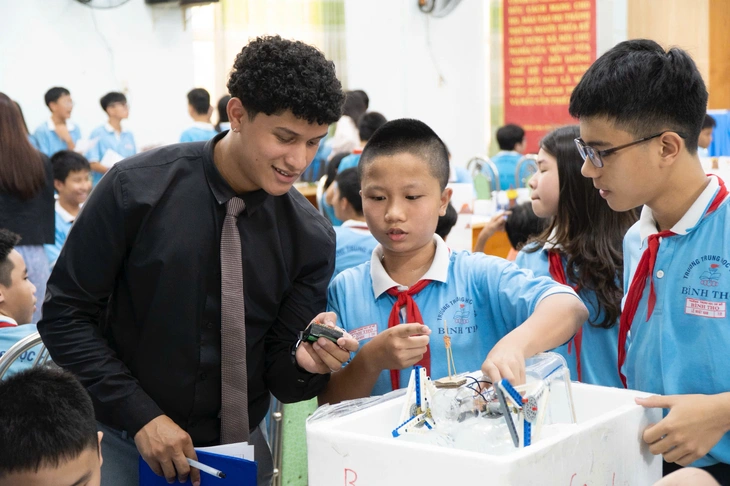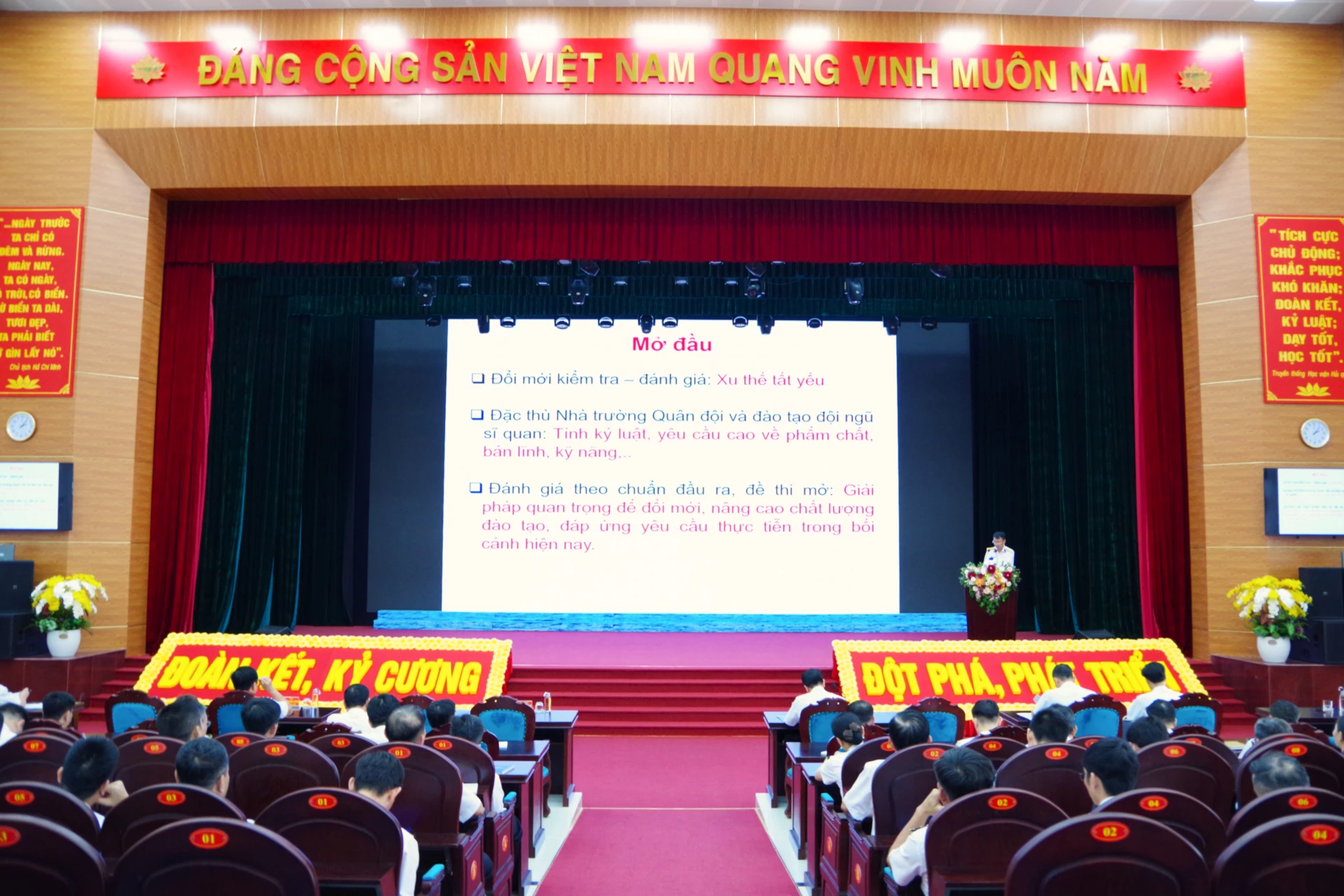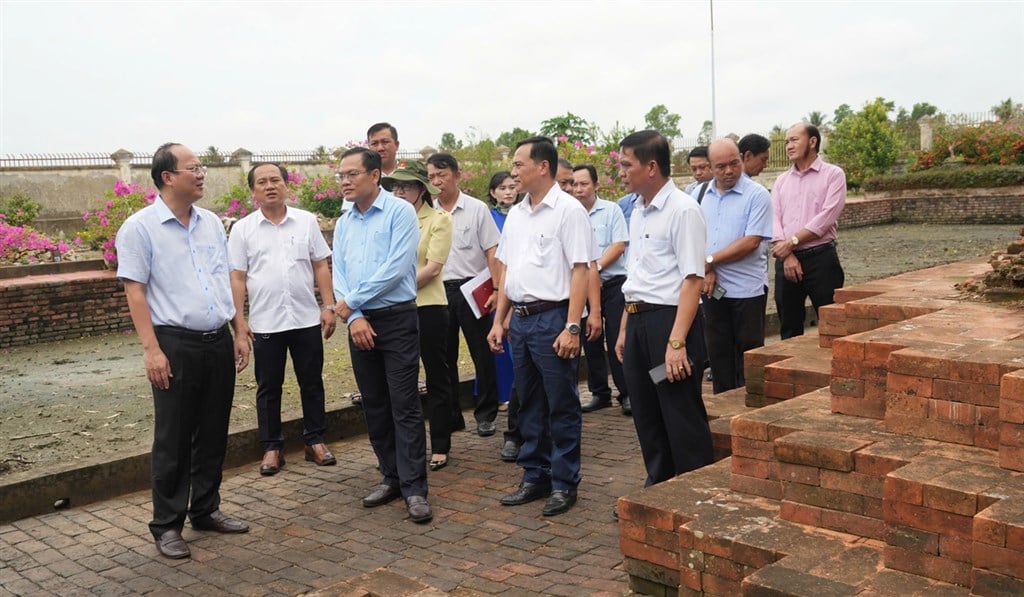
Master Lam Hong Lam Thuy, Head of the General Education Department, Ho Chi Minh City Department of Education and Training, spoke at the conference. In the 2025-2026 school year, Ho Chi Minh City will implement a bilingual STEM program and integrate AI into English teaching - Photo: T. THU
On the morning of August 20, speaking at the conference to deploy directions and tasks for the 2025-2026 school year, Master Lam Hong Lam Thuy, Head of the General Education Department, Ho Chi Minh City Department of Education and Training, said:
"In the 2025-2026 school year, Ho Chi Minh City will apply information technology, deeply integrate AI, virtual reality (VR/AR) into the process of teaching and learning English on online learning platforms, creating a personalized learning environment. Gradually making English the second language in schools."
This is one of the solutions to implement Conclusion 91-KL/TW dated August 12, 2024 of the Politburo and Decision 1600/QD-TTg dated December 19, 2024 of the Prime Minister.
Specifically, schools will establish a comprehensive English learning environment, encouraging students to use English as an effective communication and learning tool.
In particular, Ho Chi Minh City will focus on training and standardizing English proficiency for teachers with the participation of domestic and foreign experts; Develop preferential and support policies to attract good teachers and native teachers to work at schools, especially in disadvantaged areas.
Regarding facilities, Ho Chi Minh City will invest in building and upgrading functional classrooms, equipping audio-visual equipment, computers, and Internet connections for schools, prioritizing newly merged areas and disadvantaged areas;
Encourage and facilitate the socialization of education, mobilize resources from businesses, organizations, and individuals to invest in facilities and learning materials. In particular, the city's education and training sector will focus on developing a digital learning material bank and interactive learning applications so that students can self-study and practice anytime, anywhere. Build a document bank and sample activities for teachers of other subjects so that they can easily integrate English into their lessons.

Students of Binh Tho Secondary School (formerly Thu Duc City), Ho Chi Minh City participate in a science festival with teachers teaching the integrated English program - Photo: BK
Deploying bilingual English - Vietnamese STEM program
The Ho Chi Minh City Department of Education and Training has just assessed and approved the English-Vietnamese bilingual STEM program to be implemented in primary, secondary and high schools in the 2025-2026 school year.
The program consists of 36 modules for grades 1 to 12. The structure of each module is built in a 3-phase cycle: research (students approach the problem scientifically), construction (practice, design solutions to solve the problem), presentation (present, explain results convincingly).
Specifically, all learning materials are compiled in English - Vietnamese, helping students develop STEM thinking and language skills at the same time. In each module, students are regularly assessed based on a systematic STEM competency assessment framework, comprehensively assessing STEM skills, innovative thinking index and core qualities of learners.
During the teaching and learning process, teachers will guide students to prioritize the use of available, low-cost materials that are suitable for local conditions.
Before that, teachers will be trained in teaching methods and technical operations to teach English - Vietnamese bilingually. Students will learn STEM while developing English in the direction of math - science - technology .
This is also one of the solutions to gradually make English the second language in schools according to the goal of Conclusion No. 91.
Source: https://tuoitre.vn/tp-hcm-trien-khai-chuong-trinh-stem-song-ngu-va-tich-hop-ai-vao-day-hoc-tieng-anh-202508201143007.htm




























![[Photo] An Phu intersection project connecting Ho Chi Minh City-Long Thanh-Dau Giay expressway behind schedule](https://vstatic.vietnam.vn/vietnam/resource/IMAGE/2025/8/21/1ad80e9dd8944150bb72e6c49ecc7e08)


































![[Photo] Politburo works with the Standing Committee of Hanoi Party Committee and Ho Chi Minh City Party Committee](https://vstatic.vietnam.vn/vietnam/resource/IMAGE/2025/8/21/4f3460337a6045e7847d50d38704355d)

































Comment (0)